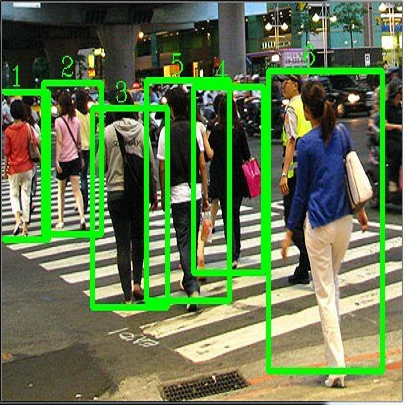We wish to detect specific categories of objects, for online vision systems that will run in the real world. Object detection is already very challenging. It is even harder when the images are blurred, from the camera being in a car or a hand-held phone. Most existing efforts either focused on sharp images, with easy to label ground truth, or they have treated motion blur as one of many generic corruptions. Instead, we focus especially on the details of egomotion induced blur. We explore five classes of remedies, where each targets different potential causes for the performance gap between sharp and blurred images. For example, first deblurring an image changes its human interpretability, but at present, only partly improves object detection. The other four classes of remedies address multi-scale texture, out-of-distribution testing, label generation, and conditioning by blur-type. Surprisingly, we discover that custom label generation aimed at resolving spatial ambiguity, ahead of all others, markedly improves object detection. Also, in contrast to findings from classification, we see a noteworthy boost by conditioning our model on bespoke categories of motion blur. We validate and cross-breed the different remedies experimentally on blurred COCO images and real-world blur datasets, producing an easy and practical favorite model with superior detection rates.
翻译:我们希望检测特定对象类别, 用于在现实世界运行的在线视觉系统。 对象探测已经非常具有挑战性。 当图像被模糊时, 从相机放在汽车或手持的手机里, 更加困难。 大多数现有的努力要么侧重于锐利图像, 容易贴上地面真相标签, 或者它们把运动视为许多一般腐败之一。 相反, 我们特别侧重于自我感动诱发的模糊细节。 我们探索了五类补救措施, 其中每个目标都指尖锐图像和模糊图像之间性能差距的不同潜在原因。 例如, 首先, 模糊图像会改变其人的可解释性, 但目前只能部分地改进物体探测。 其他四类补救措施处理多级质素、 分配外测试、 标签生成和以模糊型态调节。 令人惊讶的是, 我们发现, 定制标签生成的目的是解决空间模糊性、 领先于所有其他事物, 显著地改进物体探测。 另外, 与分类发现的结果相反, 我们通过调整模型来显著的推力, 来调整我们的模型, 模糊度, 仅能部分地改进物体探测目标。 我们验证和交叉模型, 以模糊的精确度数据制作一个不同的精确度 。



